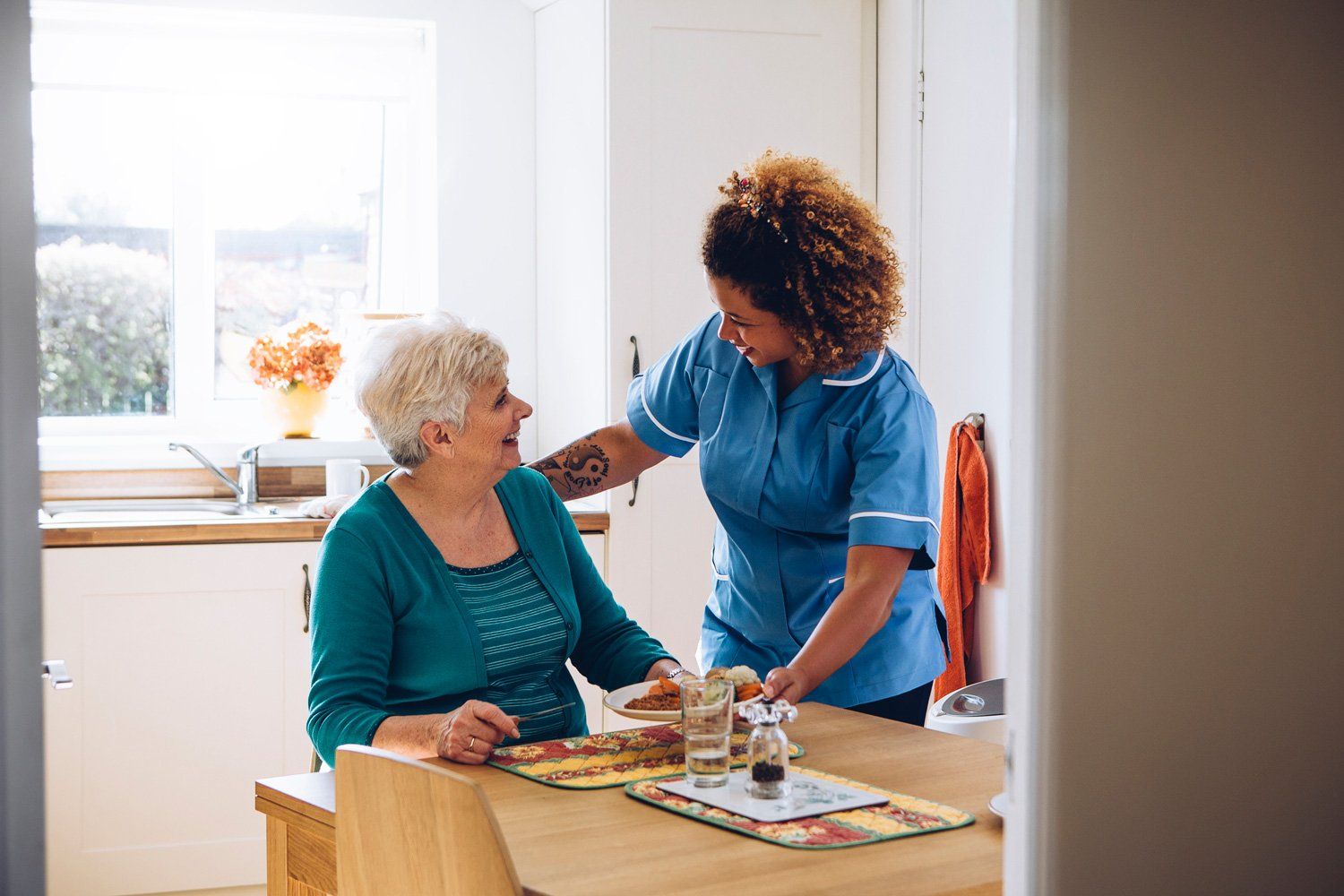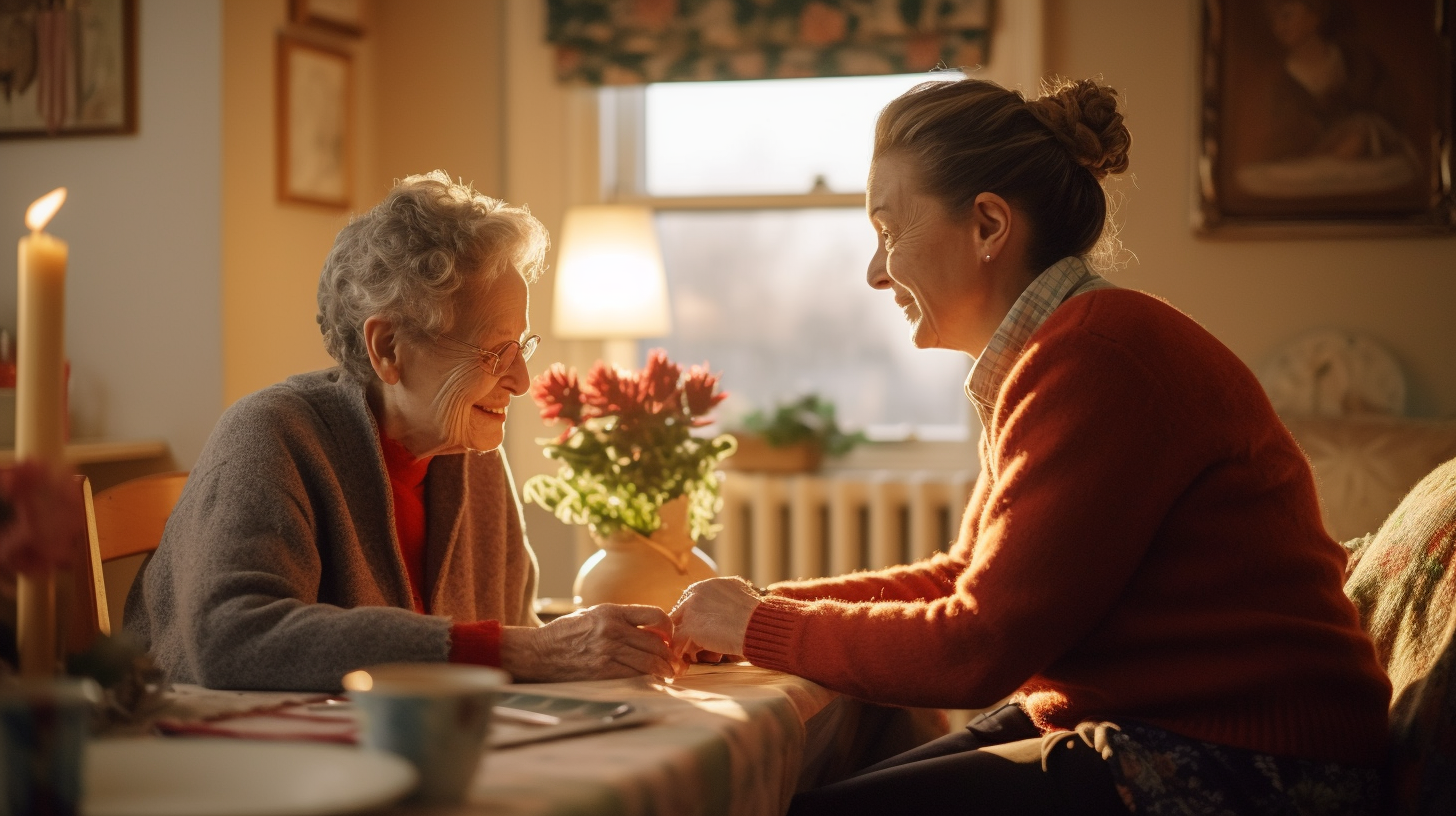End of Life
September 8, 2025

Understanding Alzheimer’s and Dementia Alzheimer’s disease is the most common cause of dementia, a general term for memory loss and cognitive decline serious enough to interfere with daily life. While Alzheimer’s is a specific brain disease that progresses over time, dementia refers to a group of symptoms affecting memory, thinking, and social abilities. Memory loss that disrupts everyday life—such as forgetting recently learned information or repeating questions—is one of the earliest signs. Recognizing these changes early can lead to better care planning and access to treatment options that may help slow progression. Recognizing Cognitive and Functional Changes As Alzheimer's or dementia progresses, individuals may struggle with problem-solving, planning, and completing familiar tasks. They might have trouble following a recipe, managing bills, or remembering directions to frequently visited places. Another key indicator is confusion about time or place—losing track of dates or forgetting where they are. In contrast, occasional forgetfulness, like missing an appointment but remembering later, is more typical with normal aging. Communication, Vision, and Behavior Shifts Language and communication difficulties often emerge, including trouble following conversations, repeating themselves, or calling objects by the wrong name. Vision and spatial awareness may also decline, leading to balance problems or difficulty judging distances while driving. Some people begin to misplace items in unusual places and cannot retrace their steps—sometimes accusing others of stealing. These signs go beyond age-related forgetfulness and may point to more serious cognitive issues. Emotional and Social Withdrawal Mood and personality changes can be early indicators of Alzheimer’s. Affected individuals may become confused, suspicious, anxious, or easily upset—especially in unfamiliar settings. They may also begin to withdraw from social activities, hobbies, or work due to trouble following conversations or remembering details. While occasional irritability or social fatigue is normal with age, consistent withdrawal or personality changes should prompt further evaluation. Why Early Detection Matters If you notice one or more of these signs in yourself or someone close to you, it’s important not to dismiss them as “just aging.” Schedule a medical evaluation to determine the cause. Some memory issues are treatable, while early diagnosis of Alzheimer’s or dementia can help individuals and families prepare for future care, explore treatment options, and maintain independence for as long as possible. Early action leads to better outcomes and peace of mind.

Symptoms Parkinson’s disease symptoms vary from person to person, often beginning subtly and usually affecting one side of the body more than the other. Key motor symptoms include tremors, slowed movement (bradykinesia), rigid muscles, and poor posture or balance. People may also experience reduced automatic movements, such as blinking or arm swinging, along with changes in speech and writing. Nonmotor symptoms can appear as well, including depression, anxiety, sleep problems, constipation, loss of smell, fatigue, and memory difficulties. Causes Parkinson’s disease develops when nerve cells in the brain break down or die, reducing levels of dopamine and norepinephrine—chemicals essential for movement and body function regulation. The exact cause is unknown, but factors may include genetics, environmental toxins, and brain changes such as the buildup of Lewy bodies, abnormal alpha-synuclein protein clumps, and mitochondrial damage. Risk Factors Age is the strongest risk factor, with Parkinson’s usually appearing after age 50 and averaging onset at age 70. Genetics can play a role, particularly with a strong family history. Men are more likely to develop the disease than women, and ongoing exposure to pesticides or herbicides may slightly increase risk. Complications Parkinson’s disease can lead to additional challenges such as dementia, depression, emotional changes, swallowing and chewing difficulties, and sleep disorders. Other issues may include bladder and bowel problems, blood pressure fluctuations, loss of smell, fatigue, pain, and sexual dysfunction. These complications can often be treated or managed, but they may progress as the disease advances. Prevention Since the cause of Parkinson’s disease is not fully understood, there are no guaranteed ways to prevent it. However, some factors may lower risk, including regular aerobic exercise, caffeine consumption, and possibly certain m edicines like ibuprofen or statins.

A Fact of Life: Planning for Long-Term Care At some point, many people will need help with daily activities such as bathing, dressing, or eating. Others may require community services like adult day care or ongoing support in a nursing home or assisted living facility. One way to prepare is through long-term care (LTC) insurance, though the market has changed in recent years, with higher costs and more policies combining long-term care with life insurance or annuities. Why Plan for Long-Term Care? Nearly half of men and two-thirds of women who turn 65 today will need some form of long-term care, and about 14 percent will require it for more than two years. The average cost is estimated at $120,900, but actual expenses vary greatly. Medicare covers only limited short-term care, veterans may access benefits through the VA, and Medicaid helps only after most personal assets are depleted. Who Pays for Long-Term Care? Many people mistakenly believe Medicare covers long nursing home stays. In reality, most costs fall on individuals and families, creating a financial gap that long-term care insurance can help address. Still, experts emphasize that while everyone needs a plan, not everyone needs LTC insurance. Traditional vs. Hybrid Policies Traditional LTC insurance works much like auto or home coverage: you pay premiums as long as the policy is in effect and make claims if care is needed. Premiums may rise over time, and if you never use the benefits, the money is lost. Hybrid policies, in contrast, combine LTC coverage with life insurance or an annuity. They often require a lump-sum or fixed payments and guarantee some return, but they are more expensive and may provide modest life insurance payouts unless tied to larger policies. How LTC Insurance Works Eligibility for benefits generally begins when you can no longer perform certain daily activities or have cognitive impairment. Policies often include waiting periods before benefits start, limits on daily or monthly coverage, and lifetime or time-limited benefit caps. Inflation protection can be added for higher premiums, and premiums are usually waived once benefits begin. The Bumpy History of LTC Insurance When LTC insurance first appeared in the 1980s, it covered only nursing homes. Over time, it expanded to include home and community services, but insurers underestimated costs, leading to steep premium hikes and many companies exiting the market. Today, only a few insurers remain, offering more limited coverage at higher prices. What If You Already Have a Policy? Policyholders facing premium increases may choose to pay more to keep full benefits, reduce coverage to maintain the same premiums, or, less wisely, drop coverage entirely. Experts usually recommend keeping policies, even with adjustments, since new coverage later in life is far more expensive. Deciding Whether to Buy Buying long-term care insurance depends on budget, assets, and financial goals. It can be a way to protect savings or preserve an inheritance, but it is not the right choice for everyone. Age and health also play a role, as younger, healthier applicants pay less and qualify more easily. Some people may prefer to self-fund, downsize, or explore Medicaid partnership policies that help preserve assets.

Mental and Psychological Benefits Animal interactions, including with dogs, cats, birds, and even robotic animals, may help reduce agitation and behavioral issues in dementia patients (e.g., improved social behaviors, reduced agitation). Some studies also noted psychological improvements among cognitively healthy older adults—for example, better symptom scores when caring for a canary compared to a plant or no intervention. Pet therapy has also been explored for depression and schizophrenia with mixed outcomes: while some trials reported reduced anxiety or improved social functioning, others showed no significant effect. Loneliness and boredom may be alleviated through animal companionship, but these emotional benefits remain largely subjective and under-studied. Physical Health Benefits Several studies suggest that pets—especially dogs—can offer physical health advantages. Elder pet owners showed lower blood pressure responses to stress, and owning pets has been linked to lower resting blood pressure and cholesterol. More notably, dog walking increases physical activity; dog owners are more likely to meet weekly activity recommendations, which is associated with slower deterioration in daily function. Observational studies also suggest better survival rates and functional outcomes in cardiovascular disease patients who own pets. Potential Harms and Risks Pet ownership may present risks for older adults. Falls caused by pets are common, with thousands of incidents annually—particularly among individuals aged 65 and older. Pets can also pose financial burdens, and theoretical risks include zoonotic infections, bites, and emotional stress if the pet passes away. Additionally, challenges such as care complexity or environmental damage have been noted, especially when pets are integrated into institutional sett ings.

Floors, Stairways, and Hallways Safe flooring and clear walkways are essential to preventing falls. Install sturdy handrails on both sides of stairs, and always hold them when going up or down—even when carrying items. Keep your hands free enough to see the steps clearly. Good lighting is also key; make sure light switches are available at the top and bottom of stairs and at both ends of long hallways. Motion-activated lights can be a smart option to brighten stairwells and pathways automatically. Keep floors clutter-free and free of shoes, books, or clothes. Ensure carpets are secured firmly, and add no-slip strips to tile or wood floors. Avoid throw rugs and steer clear of wet, slippery floors. Bathrooms Bathrooms are common places for slips, so safety features are a must. Install grab bars near the toilet and on both the inside and outside of the tub or shower. Place nonskid mats or strips on wet surfaces to reduce risk. At night, leave a light on or use automatic night lights to ensure visibility when you need the bathroom. Bedrooms Make sure your bedroom setup promotes safety and peace of mind. Place light switches or night lights close to your bed, and keep a flashlight nearby in case of power outages. It’s also a good idea to keep a landline or charged mobile phone at your bedside in case of emergencies. Kitchen Kitchens can present hazards, especially when reaching or standing for long periods. Store frequently used items like pots, pans, and utensils within easy reach to avoid stretching or climbing. Clean up spills right away, and when possible, prepare food while seated to prevent fatigue and reduce the risk of losing balance. Outdoor Spaces Your home’s exterior is just as important as the inside. Make sure outdoor steps are even and in good condition, and cover them with nonslip materials. Clear porches, decks, and walkways of clutter or fallen branches. A grab bar near the front door can provide extra support when locking or unlocking. Keep the area well lit, turning on porch lights at night or before heading out during the day if you’ll return after dark. In winter, treat walkways with salt, ice melt, or sand to prevent slipping. Other Living Areas Around the rest of the home, keep pathways clear of cords, furniture, or low tables. Choose chairs and sofas that are easy to get in and out of, and keep everyday items at waist level for convenience. Never stand on chairs or tables to reach high objects—use a sturdy step stool with a handrail, a reach stick, or ask for help. Be mindful of pets that may get underfoot, and always know where they are before moving. Keep emergency numbers printed in large font near landline phones and saved in your mobile favorites.

Floors, Stairways, and Hallways Safe flooring and clear walkways are essential to preventing falls. Install sturdy handrails on both sides of stairs, and always hold them when going up or down—even when carrying items. Keep your hands free enough to see the steps clearly. Good lighting is also key; make sure light switches are available at the top and bottom of stairs and at both ends of long hallways. Motion-activated lights can be a smart option to brighten stairwells and pathways automatically. Keep floors clutter-free and free of shoes, books, or clothes. Ensure carpets are secured firmly, and add no-slip strips to tile or wood floors. Avoid throw rugs and steer clear of wet, slippery floors. Bathrooms Bathrooms are common places for slips, so safety features are a must. Install grab bars near the toilet and on both the inside and outside of the tub or shower. Place nonskid mats or strips on wet surfaces to reduce risk. At night, leave a light on or use automatic night lights to ensure visibility when you need the bathroom. Bedrooms Make sure your bedroom setup promotes safety and peace of mind. Place light switches or night lights close to your bed, and keep a flashlight nearby in case of power outages. It’s also a good idea to keep a landline or charged mobile phone at your bedside in case of emergencies. Kitchen Kitchens can present hazards, especially when reaching or standing for long periods. Store frequently used items like pots, pans, and utensils within easy reach to avoid stretching or climbing. Clean up spills right away, and when possible, prepare food while seated to prevent fatigue and reduce the risk of losing balance. Outdoor Spaces Your home’s exterior is just as important as the inside. Make sure outdoor steps are even and in good condition, and cover them with nonslip materials. Clear porches, decks, and walkways of clutter or fallen branches. A grab bar near the front door can provide extra support when locking or unlocking. Keep the area well lit, turning on porch lights at night or before heading out during the day if you’ll return after dark. In winter, treat walkways with salt, ice melt, or sand to prevent slipping. Other Living Areas Around the rest of the home, keep pathways clear of cords, furniture, or low tables. Choose chairs and sofas that are easy to get in and out of, and keep everyday items at waist level for convenience. Never stand on chairs or tables to reach high objects—use a sturdy step stool with a handrail, a reach stick, or ask for help. Be mindful of pets that may get underfoot, and always know where they are before moving. Keep emergency numbers printed in large font near landline phones and saved in your mobile favorites.

Exercise Staying active is essential for healthy aging. Regular exercise can reduce the risk of chronic disease, improve mobility and independence, enhance balance to prevent falls, and support cognitive function and mood. Older adults should aim for about 150 minutes of moderate-intensity activity per week, choosing exercises that match their interests and abilities. Low-impact options such as walking, chair exercises, yoga, strength training, cycling, tai chi, and swimming are all excellent choices. To get the most benefit, start gradually, set goals, track your progress, address obstacles, involve others to make it social, and vary your activities to keep them enjoyable and engaging. Nutrition As we age, nutritional needs shift, making a balanced diet vital for energy and overall health. Eating a variety of nutrient-rich foods—like fresh fruits and vegetables, lean proteins, and whole grains—helps meet these needs. Protein is particularly important for maintaining muscle mass, and sources can include seafood, meats, eggs, beans, lentils, nuts, seeds, and soy products. Getting enough vitamin B12 from fortified cereals and protein-rich foods is also important, as is staying hydrated by drinking water and unsweetened beverages even when you don’t feel thirsty. Limiting sugar, excess sodium, and unhealthy fats further supports both physical and cognitive health. Sleep Quality sleep is critical for overall well-being, yet aging often brings changes in sleep patterns. Sleep disorders such as insomnia are common, but establishing healthy habits can improve sleep quality. Creating a dark, quiet, and distraction-free bedroom, maintaining a consistent bedtime routine, avoiding caffeine and alcohol near bedtime, exercising during the day, and managing stress can all help. If sleep problems persist or interfere with daily life, consulting a healthcare professional is recommended. Cognition Cognitive health—the ability to think, learn, and remember—is essential for maintaining independence. While genetics play a role, lifestyle choices can significantly influence brain function. Staying physically active, eating a balanced diet, and engaging in mentally stimulating activities such as reading, learning new skills, or pursuing hobbies can help maintain cognitive abilities. Avoid relying on unverified brain-training apps; real-world mental engagement has proven benefits for maintaining a sharp mind. Connection Social connections are closely linked to overall health and longevity, while loneliness can increase the risk of disease, mental health challenges, and premature death. Older adults can foster meaningful connections by joining interest-based communities or classes, spending time with friends and family in person or virtually, using technology to stay in touch, adopting a pet for companionship, and engaging with neighbors or local community resources. Building and maintaining strong social networks supports mental, emotional, and physical well-being.

Healthy Meal Planning Tips for Older Adults Eating well and staying active are key to healthy aging. Older adults have unique nutrition needs, and making small adjustments to daily meals can support overall health, prevent disease, and maintain energy and strength. Key Nutrition Tips Variety is essential for a balanced diet. Including foods from all food groups can help reduce the risk of conditions such as heart disease, diabetes, and high blood pressure. Protein is especially important for maintaining muscle health; aim to include seafood, dairy, beans, lentils, and fortified soy products throughout the day. Adding fresh, frozen, or pre-cut fruits and vegetables to meals and snacks ensures you get vital vitamins, minerals, and fiber. Foods fortified with vitamin B12 can help meet nutrient needs, or you can discuss supplements with your healthcare provider. Limiting sodium and added sugars, seasoning with herbs or citrus, and staying hydrated by drinking plenty of water are also important steps in supporting overall wellness. Healthy Eating Patterns The USDA has developed several healthy eating patterns tailored to different lifestyles. The Healthy U.S.-Style Eating Pattern emphasizes a balance of vegetables, fruits, whole grains, lean proteins, and low-fat dairy. The Healthy Mediterranean-Style Eating Pattern focuses more on fruits and seafood while reducing dairy intake. For those who follow a plant-based diet, the Healthy Vegetarian Eating Pattern prioritizes soy products, eggs, beans, nuts, seeds, and whole grains while excluding meat and seafood. Each pattern provides flexibility to create a nutritious diet that suits personal preferences and lifestyle. Practical Meal Planning Tips Planning meals in advance removes the guesswork and ensures a variety of nutrient-rich foods throughout the day. Using shopping lists and budget-friendly recipes can help keep costs manageable. Consider preparation time when selecting meals—some can be made in just five minutes, while others may be more involved if you enjoy cooking or want to prepare meals with family. Keep your daily calorie needs in mind and consult a healthcare provider before making significant changes.







